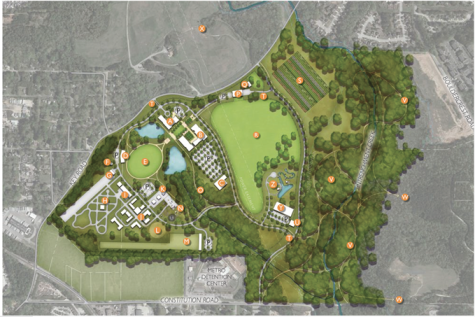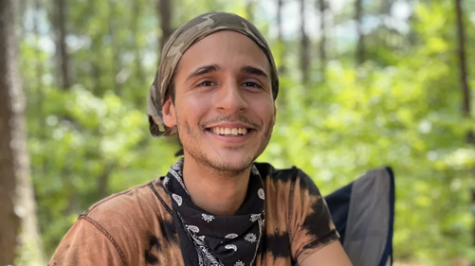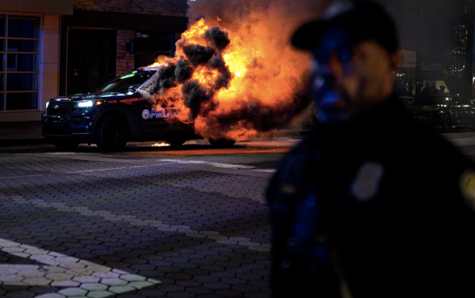Cop City: The Issue Dividing Atlanta
February 6, 2023
Atlanta, the New York of the South, is one of the biggest centers of Southern culture, but now it is becoming a battleground, with protestors and law enforcement increasingly at odds over a controversial training facility.
Cop City is the nickname for a $90 million law enforcement training facility being built in Weelaunee Forest, outside the city. The facility will include replica city blocks and buildings, shooting ranges, a car chase track and even a heli-pad for Blackhawks, basically an urban warfare training center.

The facility is beyond simple law enforcement training; it is representation of the increasing militarization that has been occurring throughout law enforcement agencies and police departments the nation over.
As a country, we spend more on our law enforcement than many other countries do on their entire military. We also spend more on our military than the next top nine spenders combined. If we combine America’s spending on corrections and law enforcement, it totals $215 billion, which would be the third largest military budget in the world.
The issue does have a degree of nuance, however, as the public does not always know what is needed by law enforcement. Detective Marcus Savage of the Pensacola Police Department (PPD) has spent time in Homicide and Narcotics, along with being a SWAT team member.
“I can see both ways 100%; they’re saying we could use this money somewhere else. The police department should take some input from the public…we’re public servants we’re here to serve you,” said Savage. “The other side of that is you create a city environment. What better way to train an officer than putting them in, instead of a real-life situation, a controlled situation? There’s certain things that you can’t teach in a real-world environment. You can’t block a road off to practice responding to a call.”
One of the most difficult aspects of policymaking is balancing the will of the people with the needs of law enforcement or other governmental appendages. As citizens, we automatically oppose a lot of measures and programs that we perceive as unneeded or wasteful, but luckily, not all of the money is coming from taxpayers in this instance, and our will is not completely followed in issues we don’t have sufficient knowledge of.
That being said, there are still some issues emanating from this development outside of the scope of police training and public sentiments; the land that the city decided on is historically Muscogee land. The Weelaunee Forest covers over 3,000 acres, but the area in question is around 300.
The 300 acres that are scheduled for development were promised to be protected in a 2017 decision by the Atlanta City Council. Former mayor Keisha Lance Bottoms reversed this decision on her own authority without consulting the public, transferring the land to the police department.
Beyond cultural significance, the forests offer environmental significance, as the first provides cover and prevents erosion in the area, along with being one of the only local habitats for several species of birds and amphibians.
Furthermore, the facility is being built within earshot of majority African-American communities, continuing the cycle of law enforcement acting with disregard, in the very least, for the wellbeing of both minority and lower income Americans. DeKalb County is 54.6% black; the area also has some of the highest rates of wealth disparity in the country.
Protests have been raging around the city, reaching a flashpoint with the killing of Tortuguita, an environmental activist and local hero who attended Florida State University before moving to Atlanta.
 Tortuguita and others had taken up residence in the Weelaunee People’s Park; this set them on a path towards conflict. Officers swarmed the area in a “clearing operation,” during which they came upon “Tort” in their tent.
Tortuguita and others had taken up residence in the Weelaunee People’s Park; this set them on a path towards conflict. Officers swarmed the area in a “clearing operation,” during which they came upon “Tort” in their tent.
Present officers described the shooting as an act of self-defense, as an officer was shot once in the leg. Instead of a fire fight or exchange of gunfire, bystanders only report hearing at least twelve shots in rapid succession, and Tort’s autopsy revealed at least 13 bullet wounds.
Tortuguita was in possession of a firearm that was legally purchased. The death of Tort has been highly scrutinized. The officers involved have no body-cam footage of the incident, and the story from the department keeps changing.
“Our job is to make sure that they are, one, protected when they protest and, two, also make sure they follow the law when there are protests,” said Savage. “Once they go outside the bounds of breaking the law, we have to step in. Just because you’re protesting doesn’t mean you get to break the law…if you’re doing something that could hurt yourself or someone else… protest, by all means protest.”
Cop cars have been burned and stolen, and rocks and fireworks were launched at a building housing police administrative offices, so of course law enforcement has had to step in. Atlantans are taking any measure to ensure their voices, no matter how muffled, are heard by the city. This development was greenlit following a city council meeting in 2021, in which the majority of the 17-hour public opinion portion was negative.
The actions of the protestors have resulted in the arrest and charging with domestic terrorism of at least a dozen protestors. This is yet another issue, as the charge is extreme and ill-defined under Georgia state law; a law that was created out of a desire to keep the public safe is now being used against the public.
 From NBC:
From NBC:
“A 2017 Georgia law defines domestic terrorism as a felony intended to kill or harm people; “disable or destroy critical infrastructure, a state or government facility, or a public transportation system”; “intimidate the civil population or any of its political subdivisions”; and change or coerce state policy or affect the conduct of government “by use of destructive devices, assassination, or kidnapping.” Conviction carries a maximum sentence of 35 years in prison.”
This whole situation is representative of the United States historically hypocritical viewpoints regarding the role of violence in protest. Solely looking at American history, one sees that violence as a call to action has been one of the most American ideals.
The Boston Massacre led to an entire war to create change, and the shelling of Fort Sumter and John Brown’s heroism led to a war amongst ourselves to unify ourselves against owning people. We are the country of the Atomic Bomb, of rampant nationalism and imperialism.
 That only scratches the surface, though. Violence has been key especially to rights-related issues. The Battle for Blair Mountain against coal companies, the Richmond Bread Riots of the Civil War, Shay’s Rebellion and the Battle of Athens, in which townspeople rose up against a corrupt local government who rigged elections and mistreated the people, ironically enough the mastermind of the corruption was their sheriff.
That only scratches the surface, though. Violence has been key especially to rights-related issues. The Battle for Blair Mountain against coal companies, the Richmond Bread Riots of the Civil War, Shay’s Rebellion and the Battle of Athens, in which townspeople rose up against a corrupt local government who rigged elections and mistreated the people, ironically enough the mastermind of the corruption was their sheriff.
When you widen the scope to our efforts abroad, we are known as the world’s police force for a reason. U.S. Interventionism is one of the most harmful precedents set in recent history. We spent the better part of the twentieth century destabilizing any socialist or communist movement we could worldwide, after 9/11 Bush lied about WMD’s 232 times, and the government propagandized us into supporting invading Iraq.
The difference with this violence contrasted to the burning of some cars and loss of retail merchandise is that the violence around activism and disruptive protesting does not go to further the interests of the establishment, imperialism, military industrial complex or capitalism.
There have been no cops harmed, other than one cop who was shot in the leg. This pales in comparison to the almost twenty Atlantans with their life marked by a terrorism charge or Tortuguita himself facing thirteen bullets inside his tent.
There is no oil to be found under that forest, there is no country to extort there, no point to prove to our fellow nations about military might. It is just nature and the love for it by the local people. Activists have been moving into the forest from all over the country, getting trees cut down with chainsaws by law enforcement, with them still nestled among the branches.
Taking the whole situation into consideration, I feel that a fair compromise could have been reached long ago. This development isn’t by any means a new issue; it has been getting bounced around for years.
The project has been shrouded in opaque press conferences. The community feels that they are being ignored. Their will is definitely being ignored, but law enforcement does need appropriate training as well, and though the nature of the buildings they have to practice are worrisome, , police, as the country further develops, will find themselves operating in increasingly urban environments.
If Cop City had been relocated to a different tract of land, and the public let in on the process wholeheartedly, I believe that the facility would not be such a big issue, but the proximity to poor black communities, the history of the land and the treatment of the protestors has been exacerbating the tensions.
Transparency is important, and without it, we put citizens on a collision course with the government and more importantly our law enforcement personnel. Corruption is rampant, and city officials should at least do their constituents the favor of trying to account for their desires, at least to some extent. The public should not feel voiceless; the public should feel respected. Law enforcement exists with the purpose of protecting and serving; they are public servants.


